More about Environments
-
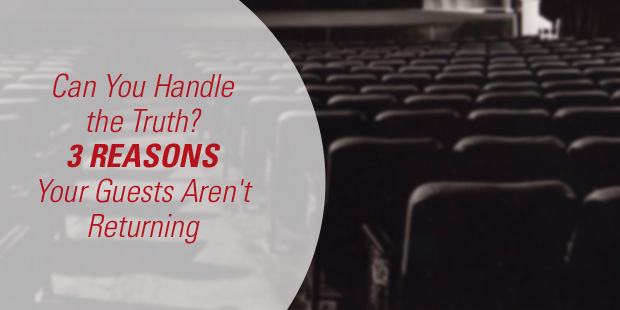
Can You Handle the Truth? 3 Reasons Your Guests Aren’t Returning
by Geoff Surratt | August 26, 2015All pastors know the feeling. A new couple visits on a Sunday morning.

-
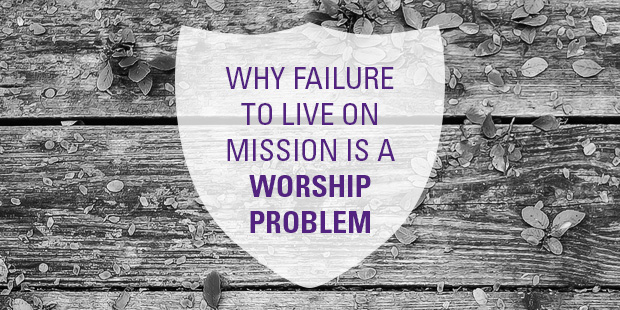
Why Failure to Live on Mission is a Worship Problem
by Trevin Wax | March 18, 2015Sometimes we think the way to engage people in mission is to make sure we get the right information to them. If we just preach the Bible, people will evangelize.

-
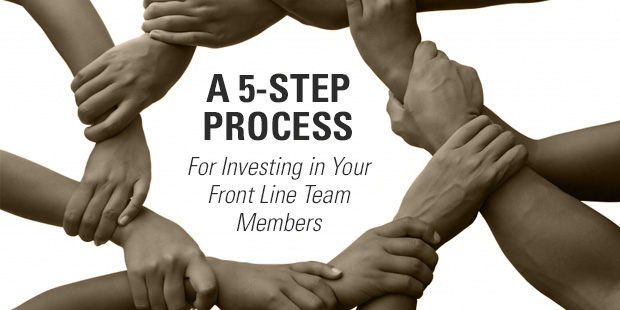
A 5-Step Process for Investing in Your Front Line Team Members
by Bob Adams | March 6, 2015I recently facilitated in a 3-day gathering of Guest Experience leaders from 15 of the largest churches in the U. S.

-

Preaching and the Expectation to be Fed: Moving Past Self-Feeding to the Heart of the Issue
by Steve Finkill | February 20, 2015Once upon a time, there was a land filled with banquet halls. Each banquet hall was different, but one thing they all had in common was that the manager of each hall would invite all the people in the area to come to a banquet each weekend.

-
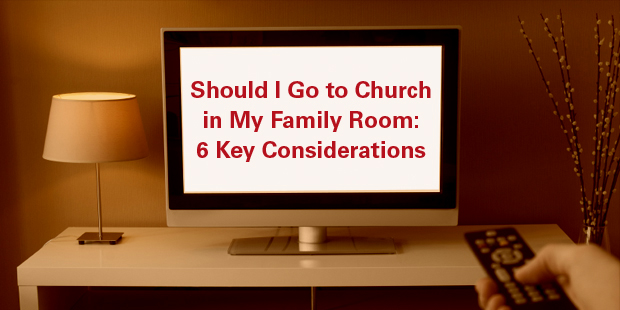
Should I Go to Church in My Family Room? 6 Key Considerations
by Thom Rainer | February 4, 2015A point of clarity is in order. In this article I am referring to “the digital church” in a very specific way.

-

Storytelling Begins with Passion, People, and Place
by Steven Chaparro | January 28, 2015When our clients come to us, invariably they arrive with a need for which they require a solution. Simple enough.

-

Top Ten Ways Churches Drive Away First-Time Guests
by Thom Rainer | January 5, 2015If you attend a church regularly, you’ve probably noticed the phenomenon. A guest shows up for a worship service, but he or she never returns.

-

Dream to Dedication Day: Developing a Destination that Lifts the Spirits
by Mel McGowan | December 2, 2014I’ve learned repeatedly that the Kingdom is built on relationships, rather than bricks and mortar. One key relationship that God has been nurturing is my friendship with John Cissel, SIOR since he gave up his personal ownership of a major real estate brokerage firm in the Northeast US to focus on Kingdom building.

-

Does Your Outside Space Reflect Your Inside Ministry?
by Bryan Rose | October 12, 2014These two pictures tell the tale of two shopping malls… The mall at the top is pretty much just like the mall I grew up going to. At this mall you park as close to the entrance as you can, then go inside to find the store you are looking for and maybe stroll up and down the covered atrium.

-
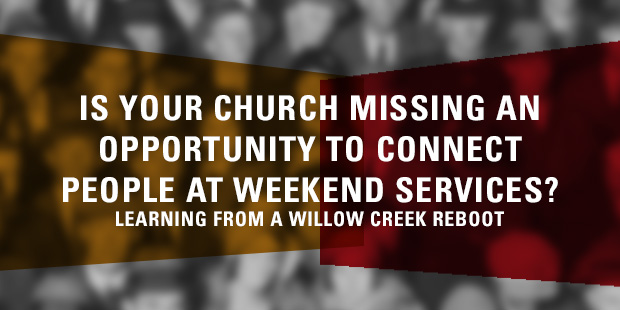
Is Your Church Missing an Opportunity to Connect People at Weekend Services? Learning from a Willow Creek Reboot
by Bill Donahue | October 7, 2014I sat in on a meeting at Willow Creek recently while Bill Hybels was casting some vision for the church’s new connection strategy…helping people find a place of friendship based on where they sit on weekends, then inviting them to connection events and gatherings. It is not a new strategy; many of you have used this for decades with a twist or two in the method.

-
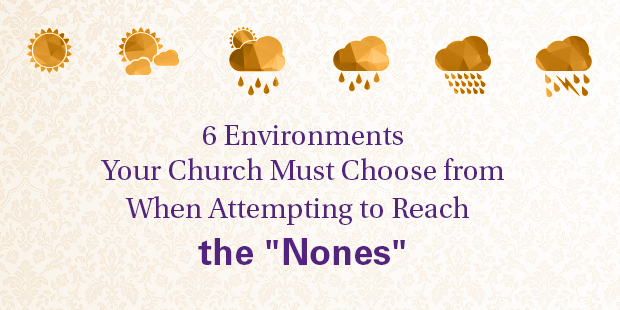
6 Environments Your Church Must Choose from When Attempting to Reach the “Nones”
by James Emery White | October 2, 2014Much attention has been given to the rise of the "Nones" and rightly so. They are currently the single fastest-growing religious group of our time and currently represent 20% of the population.

-

Churches Need to Offer What Their Community Needs
by Jody Forehand | September 24, 2014I hope you are ready to jump into some controversy with me today because I’m going to talk about things that many Christians (and many “church architects”) take personally and seriously…what a church “should” look like. But, I may surprise you with the analysis if you think you know where I’m heading because at Visioneering Studios, we are challenging the way people think about the purpose and design of church facilities from the ground up.

-
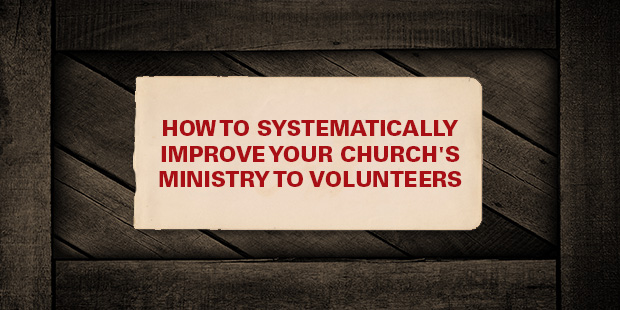
How to Systematically Improve Your Church’s Ministry to Volunteers
by Steve Caton | September 12, 2014Leading volunteers is challenging. It can even seem impossible at times.

-

Appreciating Volunteers – 33 Actionable Ideas
by Rich Birch | September 11, 2014Volunteers are the life blood of your church. In fact … your church literally wouldn’t exist without them! Often it’s small actions that show your true feelings about your volunteer teams.

-
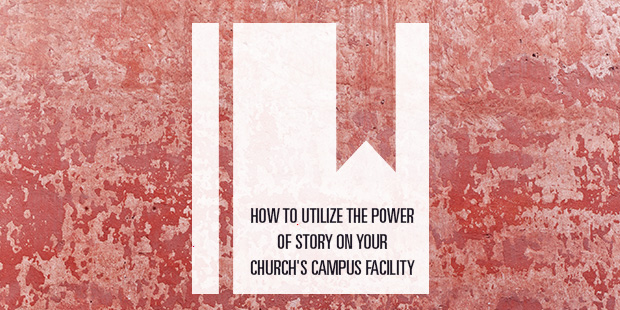
How to Utilize the Power of Story on Your Church’s Campus Facility
by Tim Cool | June 6, 2014Over the past several years we have become acutely aware of the essence of “story. ” We hear this term used in the church world and in business settings.

-
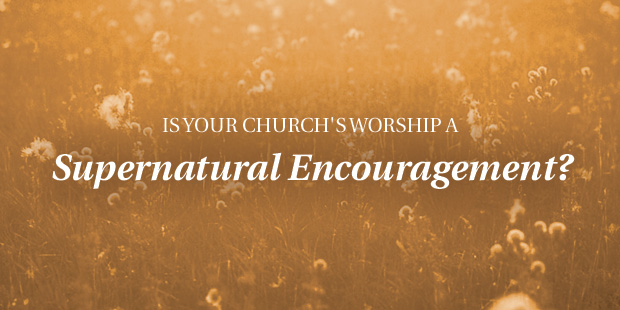
Is Your Church’s Worship a Supernatural Encouragement?
by Eric Geiger | May 1, 2014Not only does our worship as rescued sinners reflect an eternal reality, God also supernaturally utilizes our corporate gatherings to mature and encourage His people in ways not available anywhere else. God designed our faith to be communal and interdependent—and markedly supernatural.

-

Trends in Church Buildings – Why Bigger is Becoming Smaller
by Ed Stetzer | April 13, 2014The megachurch has been a topic of interest for years. There are more every year and their growth rate is increasing.

-

Creating Your Own Space for Gospel Hospitality
by Tim Keller | March 27, 2014Recently, our church (Redeemer Presbyterian Church) embarked on a hugely ambitious capital campaign to purchase the first of several ministry center facilities in Manhattan, one of the most expensive real estate markets in the world. Why are we doing this? It has become increasingly clear that this effort represents good stewardship.

-
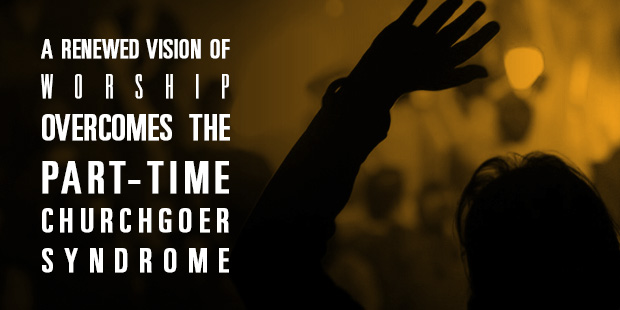
A Renewed Vision of Worship Overcomes the Part-Time Churchgoer Syndrome
by Trevin Wax | September 15, 2013Geoff and Christine are thirty-something churchgoers who love Jesus and love their three kids. They consider themselves faithful members of New Life Community Church.

-

Are You Building a Ministry Without God?
by Geoff Surratt | September 4, 2013I wonder how long I could be successful in ministry without God? I’ve been in vocational ministry for 31 years, and I seldom encounter a situation I haven’t seen before. I have a stockpile of sermons to pull from, and many other places where I can grab a complete sermon with a moments notice.

-

2 Wrong Ways to Think About Church Buildings
by Ed Stetzer | August 24, 2013I am often invited to speak to a lot of different churches in a lot of different buildings. Some churches obviously put great care and thought into their building.

-

The Magic of Place – Even When It’s Not Your Place
by Tim Cool | August 20, 2013Does the theology of “storytelling” with a church’s facility apply to multisite campuses and church plants, especially if it is not your “place”? Does it matter that we don’t create a sense of place? Is it worth the mental, emotional, physical and financial investment to communicate your unique story? Answer: Yes Why does it matter? Because people matter, and your multisite or church plant is there to reach your community and people. I believe it is obvious, that if you have an owned facility or a long term lease the options that avail themselves to you for communicating your story are vast.

-
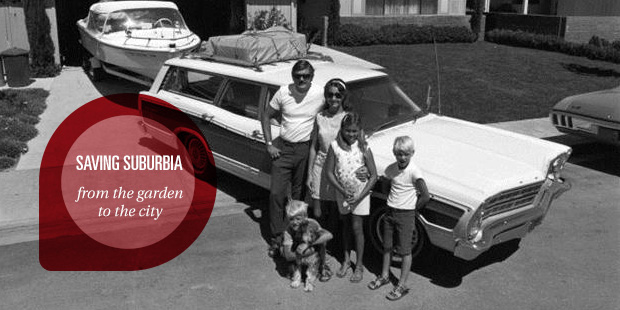
Saving Suburbia: From the Garden to the City
by Mel McGowan | August 17, 2013God is a God of community. Before the beginning, the Father, Son, and Holy Spirit “did life together” in community.

-

7 Ways to Love Your Community
by Sam Rainer III | July 31, 2013Church leaders should love their churches where they are now, not where they wish their congregations could be in the future. That’s a given, or at least should be.

-
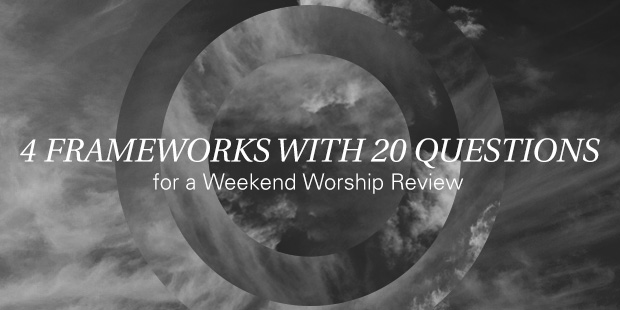
4 Frameworks with 20 Questions for a Weekend Worship Review
by Rich Birch | July 23, 2013Regular evaluation of your weekend services should be a normal pattern for your leadership team. For us it happens during a Monday morning meeting were we look at what happened the day before and we also settle on the services for the coming weekend.

-

The Tone of Your Sermon Should Match the Tone of the Text
by Trevin Wax | July 21, 2013A good suggestion from Calvin Miller’s Preaching… A brief word about genre: it exists; honor it. Paul’s letters are different from the Psalms, from the minor prophets, from the Pentateuch.

-
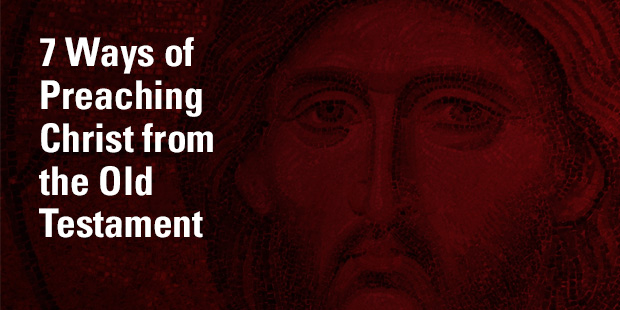
7 Ways of Preaching Christ from the Old Testament
by Trevin Wax | June 30, 2013No pastor wants his preaching to be considered “Christ-less” or something other than “Christ-centered. ” Still, it is sometimes difficult to understand what exactly is meant by this kind of terminology.

-

Church Music Conflicts, Part 2: 7 Biblical Principles for Testing Your Music
by Ed Stetzer | June 22, 2013Oh so many moons ago, I wrote a book with Elmer Towns called Perimeters of Light. In that book, we talked about how to choose your music.

-
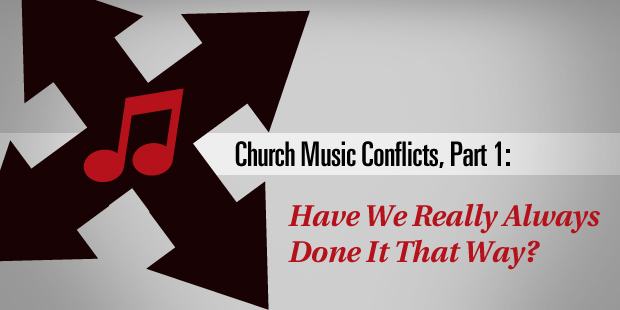
Church Music Conflicts, Part 1: Have We Really Always Done It That Way?
by Ed Stetzer | June 21, 2013Music can be one of the most controversial issues in the body of Christ. Each person has his or her own unique taste in music.

-
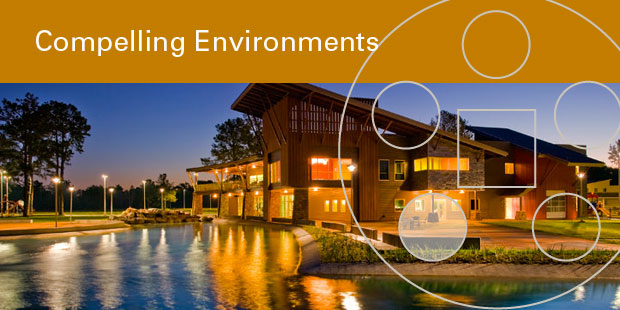
Compelling Environments
by Will Mancini | June 19, 2013Having designed hundreds of strategies during the last decade, I find that there are three dominant environments that every local church is attempting to create: worship environments, connecting environments, and serving environments. Each one plays a significant role in transmitting and realizing the vision.

-
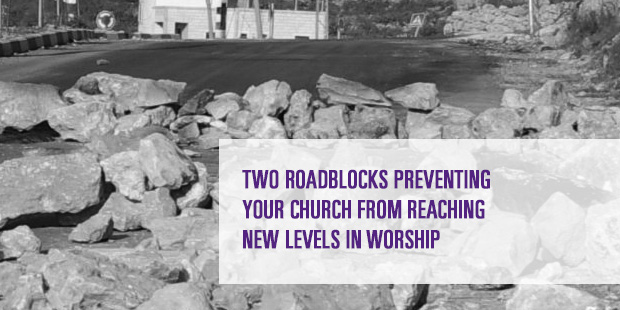
Two Roadblocks Preventing Your Church from Reaching New Levels in Worship
by Steven Furtick | June 5, 2013Recently I tweeted the following about a problem that exists in a lot of churches: 2 pet peeves: 1) Pastors who don’t engage in worship 2) Worship musicians who don’t engage with the Word It seemed to resonate with a lot of people and I wanted to elaborate on it a little because I think these are two big roadblocks for taking your church to a whole new level in worship. 1) Pastors who don’t engage in worship.

-

An Architect’s Secret Weapons: Environmental Design
by Jody Forehand | June 1, 2013Do you know what environmental design is? If you’re not in the “industry” you may have never heard that term, but if you’re a living, breathing American and aren’t living under a rock, then you experience it everyday when you go out in public. Environmental design is a broad discipline but at its core (when discussing built environments) it is a key element in transforming a building into an experience.

-

An Architect’s Secret Weapons: The Space Between Buildings
by Jody Forehand | May 19, 2013What would you say if your architect told you he could design you a space that is beautiful, functional, and spacious, and it would only be about 10% of the cost per square foot of the typical building? You might ask him what he’s been smoking, or you might say “I’ll take it!” before you even hear what it is. Too often architect’s forget about this secret weapon.

-

An Architect’s Secret Weapons: Color
by Jody Forehand | April 16, 2013What turns a building into a work of art? What makes good architecture stand out from the masses of boring buildings? These are all questions of opinion. Most people don’t know the answer to these questions, but they know a good building when they see it.

-

Improve the Vibe: Take Advantage of All Senses in Preparing for Worship
by Kim Fukai | March 27, 2013It’s Sunday morning. What happens in those few minutes after your visitors take their seat in the auditorium/sanctuary/worship center and before service begins? I speak of visitors because, let’s be honest, they’re the ones who come early.

-
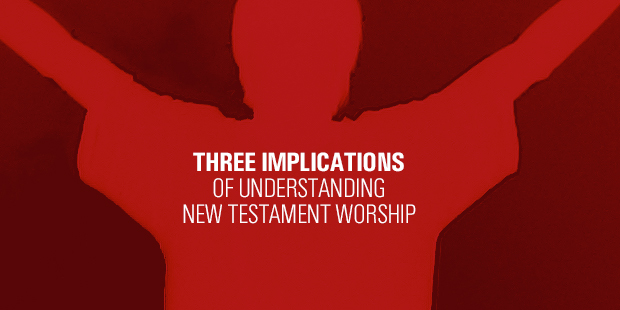
Three Implications of Understanding New Testament Worship
by Aaron Armstrong | March 19, 2013What is worship? More specifically, what does it mean to worship? Is there a right way or a wrong way to do it? Is it singing, clapping and/or raising your hands at your local church on Sunday… or is there something more to it than that? The question of what worship is is extremely important. Far too many arguments have been had over what is and is not a legitimate form of worship.

-
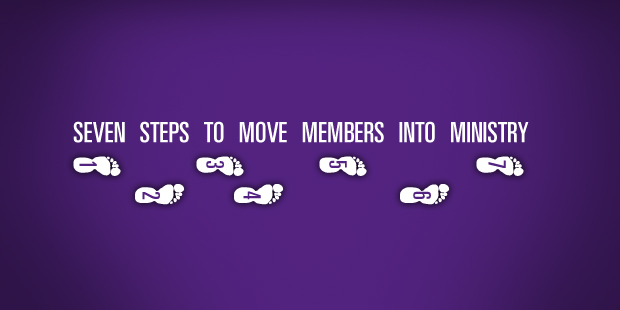
Seven Steps to Move Members into Ministry
by Chuck Lawless | March 13, 2013Sam attends his church faithfully every Sunday, but he is not involved in doing ministry through his church. Others view Sam as a committed member simply because he is there every Sunday morning, and no one would dare question his faithfulness.

-
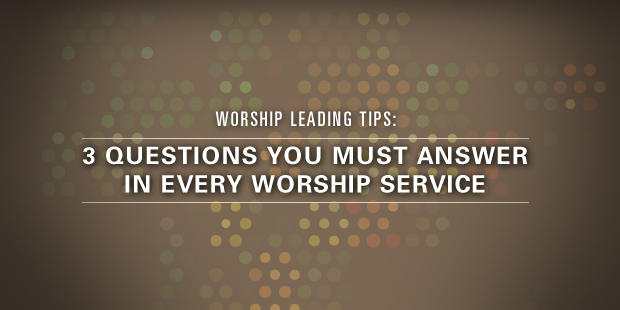
Worship Leading Tips: 3 Questions You Must Answer in Every Worship Service
by Steve Finkill | March 11, 2013Imagine going to a new friend’s home for dinner and experiencing this: your host simply opened the door and said, “Welcome! Come on in!” and then turned and walked away person after person in their family walked into the room and simply started a conversation without introducing themselves everyone in the host family seemed busy with tasks, but you were unsure of what you were supposed to do You’d probably feel a little disoriented and vaguely uncomfortable. As a worship leader, you are usually the initial host for the worship service each weekend.

-

How Churches and Grocery Stores Should Be Alike
by Caryn Rivadeneria | March 7, 2013I have plenty of reasons not to love my neighborhood grocery store: it’s not as cheap as Wal-Mart or Aldi; the fruit’s not as fresh as that big fruit market; it’s not trendy or hip at all like Trader Joe’s or Whole Foods; there’s no little cafe; there’s not an over-abundance of organic or grass-fed or free-range or hyper-local; and, when I was little, my father worked for its parent company and got laid off. So I should maybe be bitter or judgmental or snobby or a better steward or something.

-

4 Simple Rules About Where Your Church Meets
by Rick Warren | March 4, 2013Pastor Rick Warren loves to tell the "moving" story of Saddleback - about how they moved so often in the early years of the church it became a standing puzzle on Sundays to figure out where they would meet the following week. Here's how he tells it: If you’ve ever heard the story of Saddleback, you know we moved from one location to another for twelve years before moving onto our campus in 1992.

-

The Real Competition for Your Church
by Steven Furtick | February 5, 2013One of the biggest dangers that any church faces when trying to reach people who are far from God is comparing itself to other churches. How good your preaching is compared to them.

-

What People Want From Your Groups
by Eric Geiger | February 2, 2013Ed Stetzer, Micah Fries, and I are currently working on a new book, Transformational Groups, based on insights gleaned from a massive research project conducted on small groups (including classes, Bible fellowships, etc). In one phase of the research, the research team at LifeWay Research surveyed and interviewed people who were once in a group but are not currently involved in a group.

-

The Importance of Clean Bathrooms
by Seth Godin | January 25, 2013The facilities at Disney World are clean. It's not a profit center, of course.

-

Well Diggers vs. Temple Builders
by Tim Cool | January 24, 2013“We are well diggers instead of temple builders” is a phrase I heard for the first time from Mel McGowan, president of Visioneering Studios. The first time I heard it, I needed to have it explained….

-
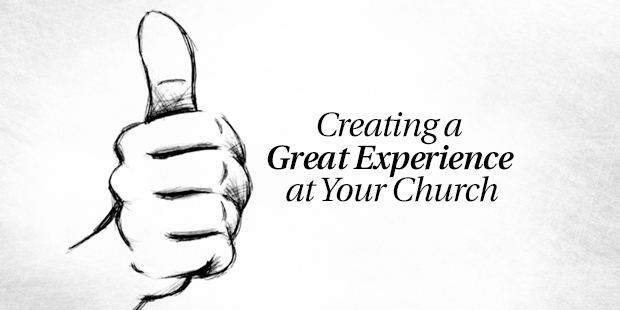
Creating a Great Experience at Your Church
by Brad Lomenick | January 20, 2013It’s been a while since I last read Joe Pine and Jim Gilmore’s book The Experience Economy. If you haven’t read this book, trust me.

-
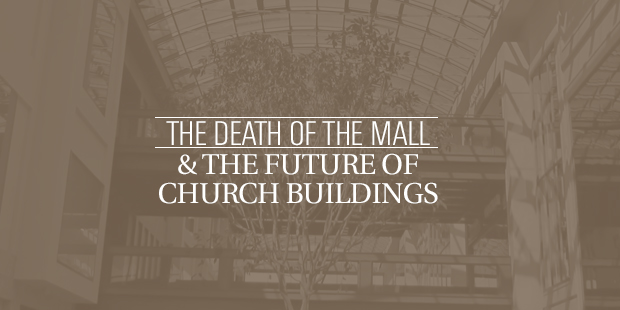
The Death of the Mall and the Future of Church Buildings
by Thom Rainer | January 19, 2013I remember the first time I went to a mall. Raised in a small town in the southeastern section of Alabama, I was amazed when I went to the “big city” mall in Montgomery.

-

The Admission Price of Worship
by Steven Furtick | January 17, 2013We live in a culture that places feelings at the apex of our motivation for everything we do. If you feel like doing something, go for it with everything you’ve got.

-

Don’t Hate Me Because I’m a Church Building
by Rob Cizek | January 16, 2013Think about your commute this morning. I bet that somewhere along the way you passed through a mixed neighborhood.

-

Unlocking Creativity Through Laughter
by Steve Finkill | January 10, 2013One of the consistent challenges of creating compelling environments is finding new, fresh ways to engage the hearts of people. In my years as a worship leader, I facilitated many brainstorming sessions with different teams to come up with service elements that would communicate clearly and engage people deeply.

-

Transformational Teaching as Songwriting
by Steve Finkill | January 7, 2013Who’s your favorite songwriter? That usually depends on your musical taste—it could be anyone from the Beatles to Bono to Billy Joel. All great songwriters have the ability to move us deeply through their work, engaging our hearts and minds about both the trivial and the philosophical.

-

You’re Not a Lead Worshipper
by Steve Finkill | December 15, 2012The term “lead worshipper” has been around for several years, popularized by some of the most well-respected song writers and worship leaders on the earth today. While I understand the intent behind this phrase, I believe that the unintended consequence of this approach has led to un-engaging worship experiences for many congregations.

-
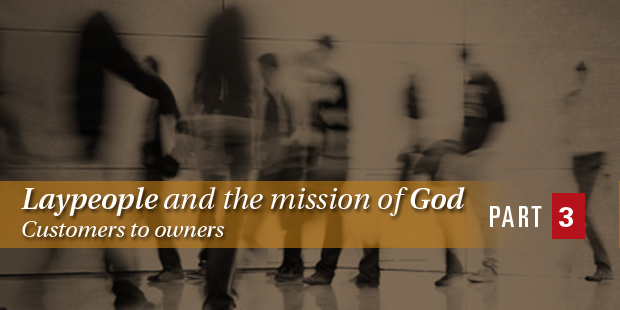
Laypeople and the Mission of God, Part 3
by Ed Stetzer | December 12, 2012I continue my series today about laypeople and the mission of God. Let me start with a crisis point in my ministry that helped me to see the issue more clearly.

-

Creating a Come and See Culture
by Rob Cizek | December 8, 2012II. AN ENGAGING PRESENTATION A.

-

Creating a Come and See Culture
by Rob Cizek | December 8, 2012Here are the notes from Andy Stanley at Catalyst One Day Seattle 2012 Creating A Come-And-See Culture : Three Essential ingredients INTRODUCTION The church is a bunch of environments. Staff and volunteers are from various church backgrounds.

-
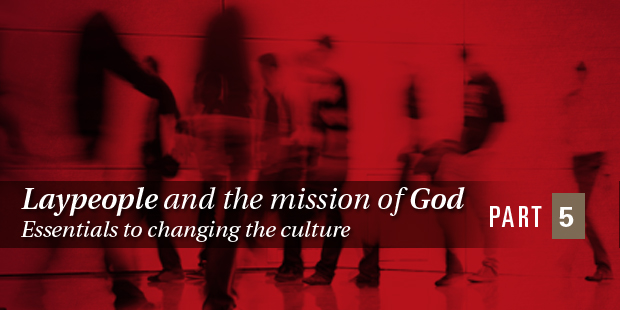
Laypeople and the Mission of God, Part 5
by Ed Stetzer | December 5, 2012Where do you start engaging laypeople in your church on a higher level? Today I continue my series on laypeople and the mission of God by giving action steps to implement in your church. The goal is to get people of the sidelines moving them from fan to player.

-
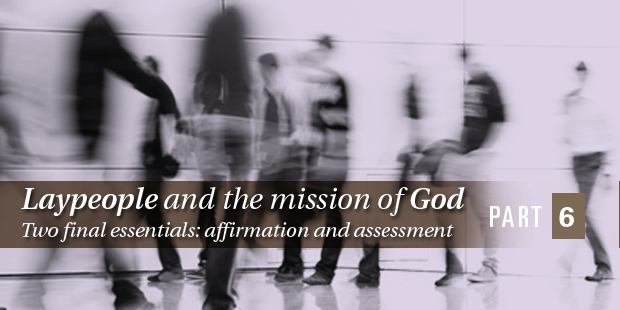
Laypeople and the Mission of God, Part 6
by Ed Stetzer | December 4, 2012Today I conclude my series on laypeople and the mission of God. I hope you have been challenged to rethink how you do church-- there are far too many spectators and not enough participants in the mission of God.

-

6 Reasons to Have a Dedicated Guest Website for Your Church
by Will Mancini | November 29, 2012Over the years the Auxano Design team has helped churches think more strategically about guest engagement. (Read 10 Mind Blowing Facts to Fuel your Hospitality Ministry).

-
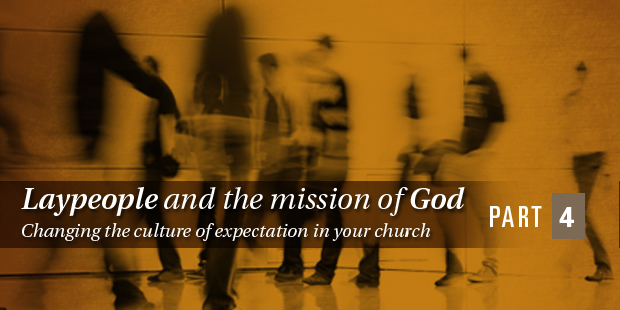
Laypeople and the Mission of God, Part 4
by Ed Stetzer | November 12, 2012Today I continue my series on laypeople and the mission of God. If you have been following this series you know how I don't like the word "laypeople.

-
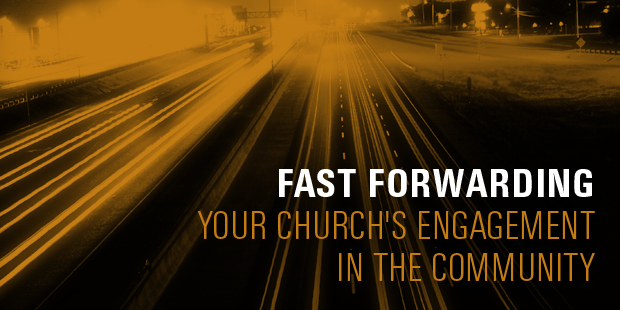
Fast Forwarding Your Church’s Engagement in the Community
by Warren Bird | November 6, 2012Churches today are pioneering a shift in leaders who are truly engaging their communities in mission. These churches are not only deploying their own members for service; they are engaging with people who aren’t part of their church.

-
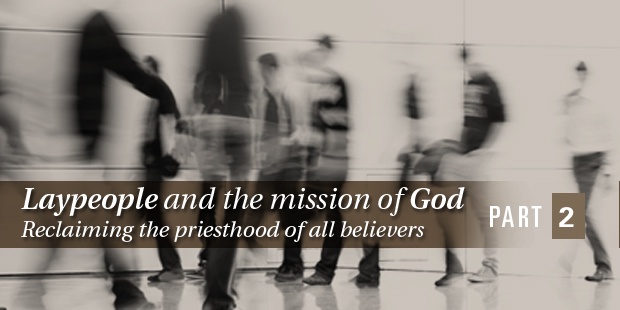
Laypeople and the Mission of God, Part 2
by Ed Stetzer | October 13, 2012Today I continue my series about laypeople and the mission of God. If you missed the first post in the series about killing the clergy-laity caste system, you can find it here.

-
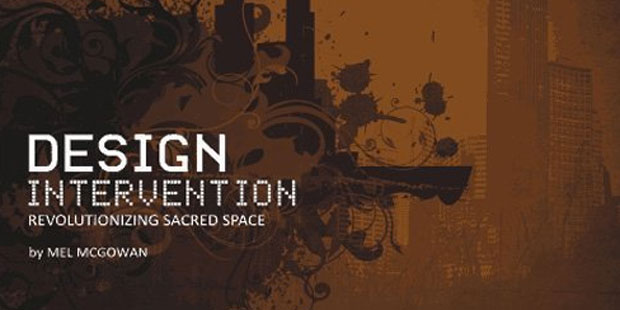
Design Intervention
by Mel McGowan | October 12, 2012It's happening all across the world, from Las Vegas to Cambodia. Churches are staging design interventions: rediscovering Christ-centered community, rethinking sacred space, and revolutionizing ministry.

-

10 Mind-Blowing Facts to Fuel Your Hospitality Ministry
by Will Mancini | October 11, 2012Every month for the last decade, the Auxano team conducts ministry observations during weekend services. We call it the Guest Perspective Evaluation.

-

Power for Proclamation
by Trevin Wax | September 26, 2012Many today are interested in the Holy Spirit. They may be curious about His gifts.

-
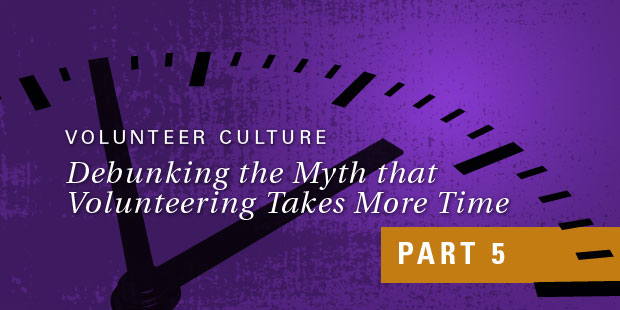
Volunteer Culture: Debunking the Myth that Volunteering Takes More Time, Part 5
by Mark Waltz | September 26, 2012In the last post and next couple posts about creating and cultivating a volunteer culture, I’ll pull from my second book, Lasting Impressions: From Visiting to Belonging, to review some common myths that prevent people from stepping up to serve in the local church (or any organization). Myth #2: “Volunteering Requires Too Much Time.

-
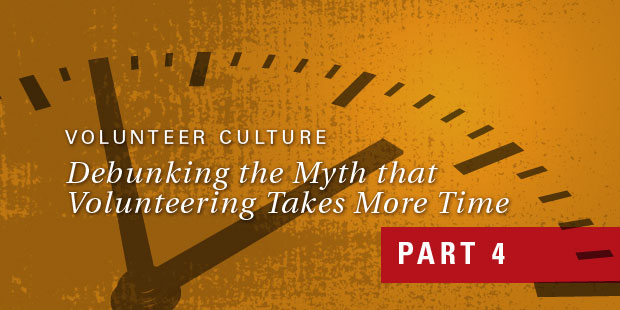
Volunteer Culture: Debunking the Myth that Volunteering Takes More Time – Part 4
by Mark Waltz | September 24, 2012For the next several posts about creating and cultivating a volunteer culture, I’ll pull from my second book, Lasting Impressions: From Visiting to Belonging, to review some common myths that prevent people from stepping up to serve in the local church (or any organization). MYTH #1: “There’s no room for me; it’s all being done already.

-
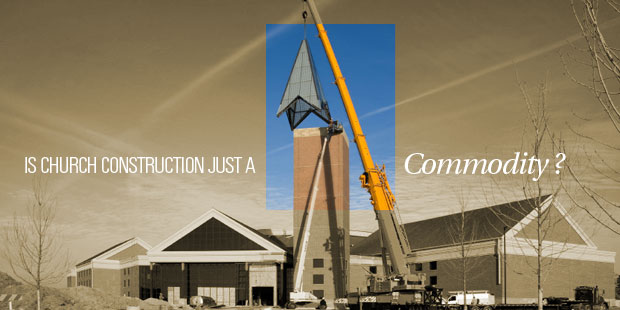
Is Church Design and Construction Just a Commodity?
by Tim Cool | September 17, 2012“We have a local builder that builds warehouses, how different can that be to a church?” “We want a ministry space specialist to help us plan and design our new facility, but any contractor can build it. ” ” We are going to bid it out and just take the lowest price.

-
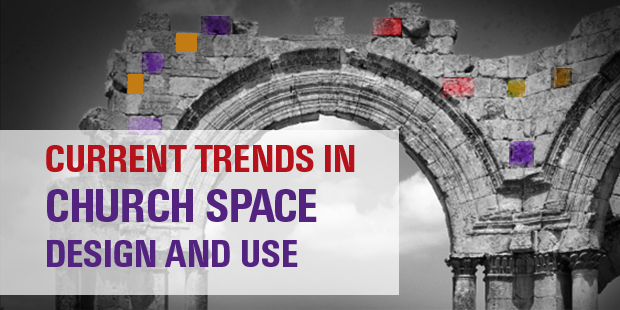
Current Trends in Church Space Design and Use
by Mel McGowan | September 17, 2012from an interview with Tony Morgan and Mel McGowan You’re going to love this connection. Mel McGowan spent nearly a decade with the Walt Disney Company, he founded Visioneering Studios, a nationwide architectural and community development ministry which was awarded the 2008 Solomon Award for “Best Church Architect”.

-
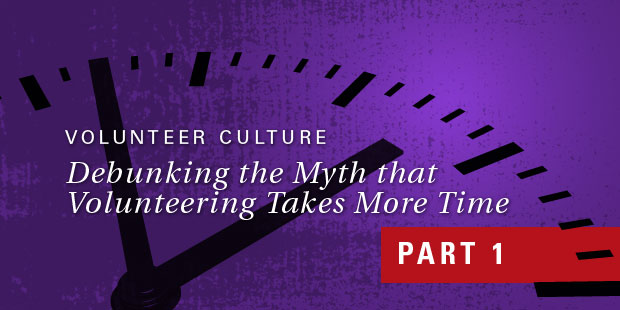
Volunteer Culture: Debunking the Myth that Volunteering Takes More Time – Part 1
by Mark Waltz | September 17, 2012I’m often asked what it takes to move a local church from staff-led ministry to ministry led and carried out by teams of volunteers. It's certainly not an overnight process to make such an intentional change.

-
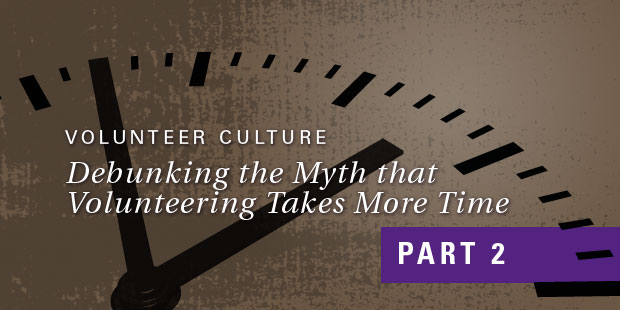
Volunteer Culture: Debunking the Myth that Volunteering Takes More Time – Part 2
by Mark Waltz | September 17, 2012In our local churches we sometimes operate in a fantasy land, ignoring the reality that our people are living outside the four walls of the church. We create programs, activities, and opportunities for people to volunteer their time and talent as though our people are sitting around with nothing to do.

-
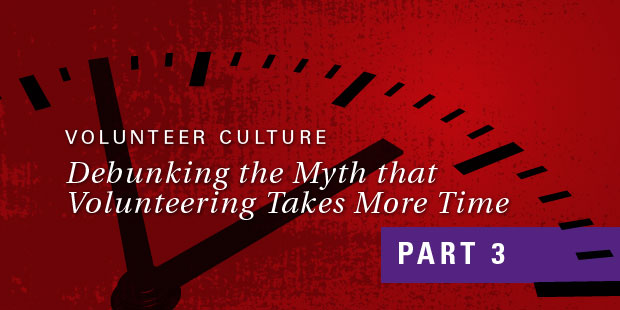
Volunteer Culture: Debunking the Myth that Volunteering Takes More Time – Part 3
by Mark Waltz | September 16, 2012When your church decides to intentionally develop a culture where it's normal to volunteer, where it's natural to serve, it's easy to make it all about the task. And when it's all about the task, we can make it all about our church.












